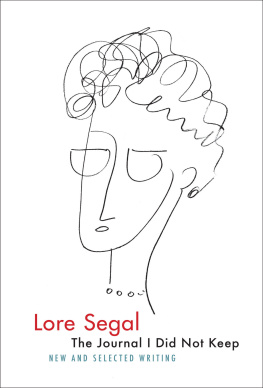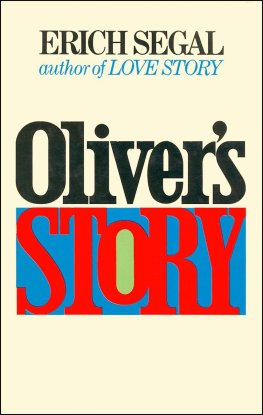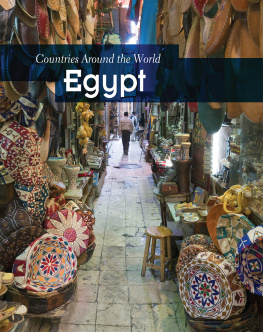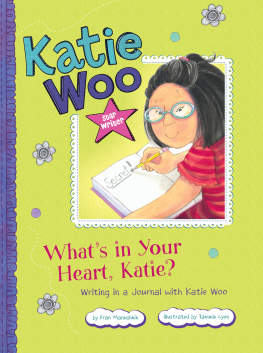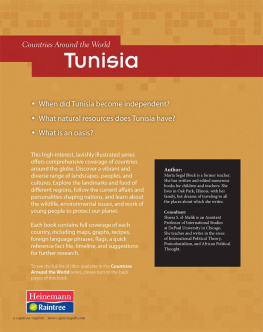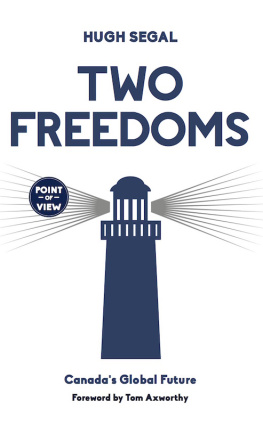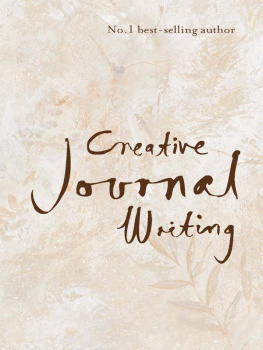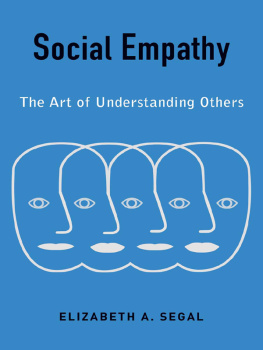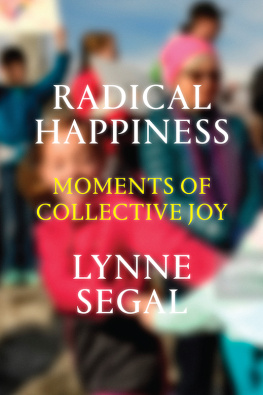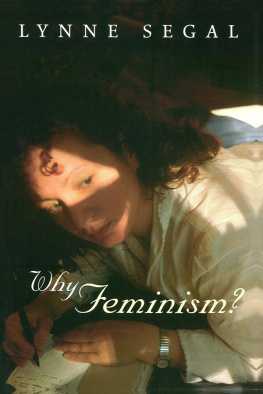Lore Segal - The Journal I Did Not Keep: New and Selected Writing
Here you can read online Lore Segal - The Journal I Did Not Keep: New and Selected Writing full text of the book (entire story) in english for free. Download pdf and epub, get meaning, cover and reviews about this ebook. year: 2019, publisher: Melville House, genre: Non-fiction / History. Description of the work, (preface) as well as reviews are available. Best literature library LitArk.com created for fans of good reading and offers a wide selection of genres:
Romance novel
Science fiction
Adventure
Detective
Science
History
Home and family
Prose
Art
Politics
Computer
Non-fiction
Religion
Business
Children
Humor
Choose a favorite category and find really read worthwhile books. Enjoy immersion in the world of imagination, feel the emotions of the characters or learn something new for yourself, make an fascinating discovery.
- Book:The Journal I Did Not Keep: New and Selected Writing
- Author:
- Publisher:Melville House
- Genre:
- Year:2019
- Rating:3 / 5
- Favourites:Add to favourites
- Your mark:
- 60
- 1
- 2
- 3
- 4
- 5
The Journal I Did Not Keep: New and Selected Writing: summary, description and annotation
We offer to read an annotation, description, summary or preface (depends on what the author of the book "The Journal I Did Not Keep: New and Selected Writing" wrote himself). If you haven't found the necessary information about the book — write in the comments, we will try to find it.
Lore Segal: author's other books
Who wrote The Journal I Did Not Keep: New and Selected Writing? Find out the surname, the name of the author of the book and a list of all author's works by series.
The Journal I Did Not Keep: New and Selected Writing — read online for free the complete book (whole text) full work
Below is the text of the book, divided by pages. System saving the place of the last page read, allows you to conveniently read the book "The Journal I Did Not Keep: New and Selected Writing" online for free, without having to search again every time where you left off. Put a bookmark, and you can go to the page where you finished reading at any time.
Font size:
Interval:
Bookmark:
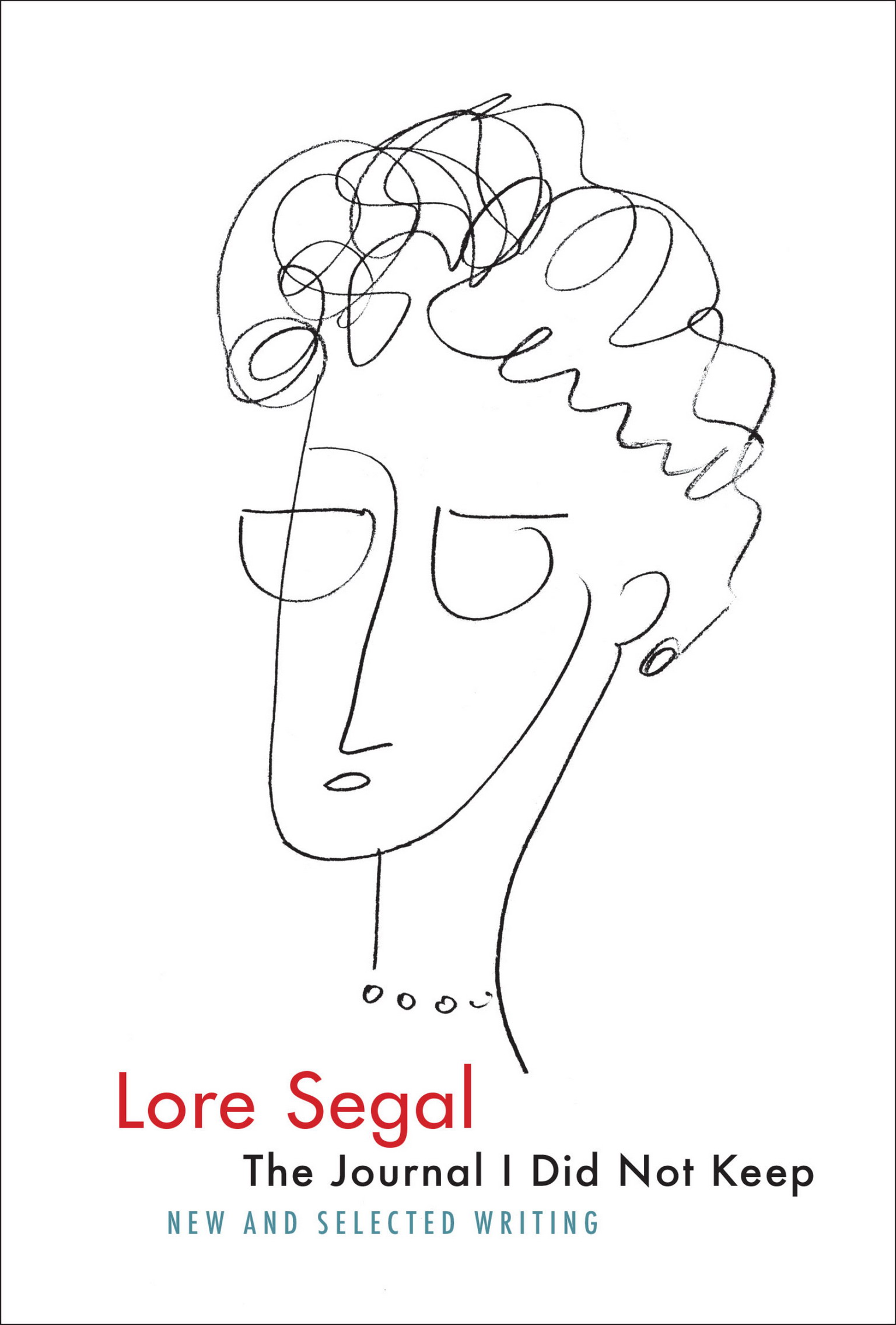
FICTION
Half the Kingdom
Shakespeares Kitchen
Her First American
Lucinella
Other Peoples Houses
TRANSLATIONS
The Story of King Saul and King David
The Book of Adam to Moses
The Kingbird by the Brothers Grimm
The Juniper Tree and Other Tales from Grimm
Gallows Songs by Christian Morgenstern, in collaboration with W. D. Snodgrass
FOR CHILDREN
More Mole Stories and Little Gopher Too
Why Mole Shouted and Other Stories
Morris the Artist
The Story of Mrs. Lovewright and Purrless Her Cat, illustrated by Paul O. Zelinsky
The Story of Old Mrs. Brubeck and How She Looked for Trouble and Where She Found Him
Tell Me a Trudy
All the Way Home
Tell Me a Mitzi
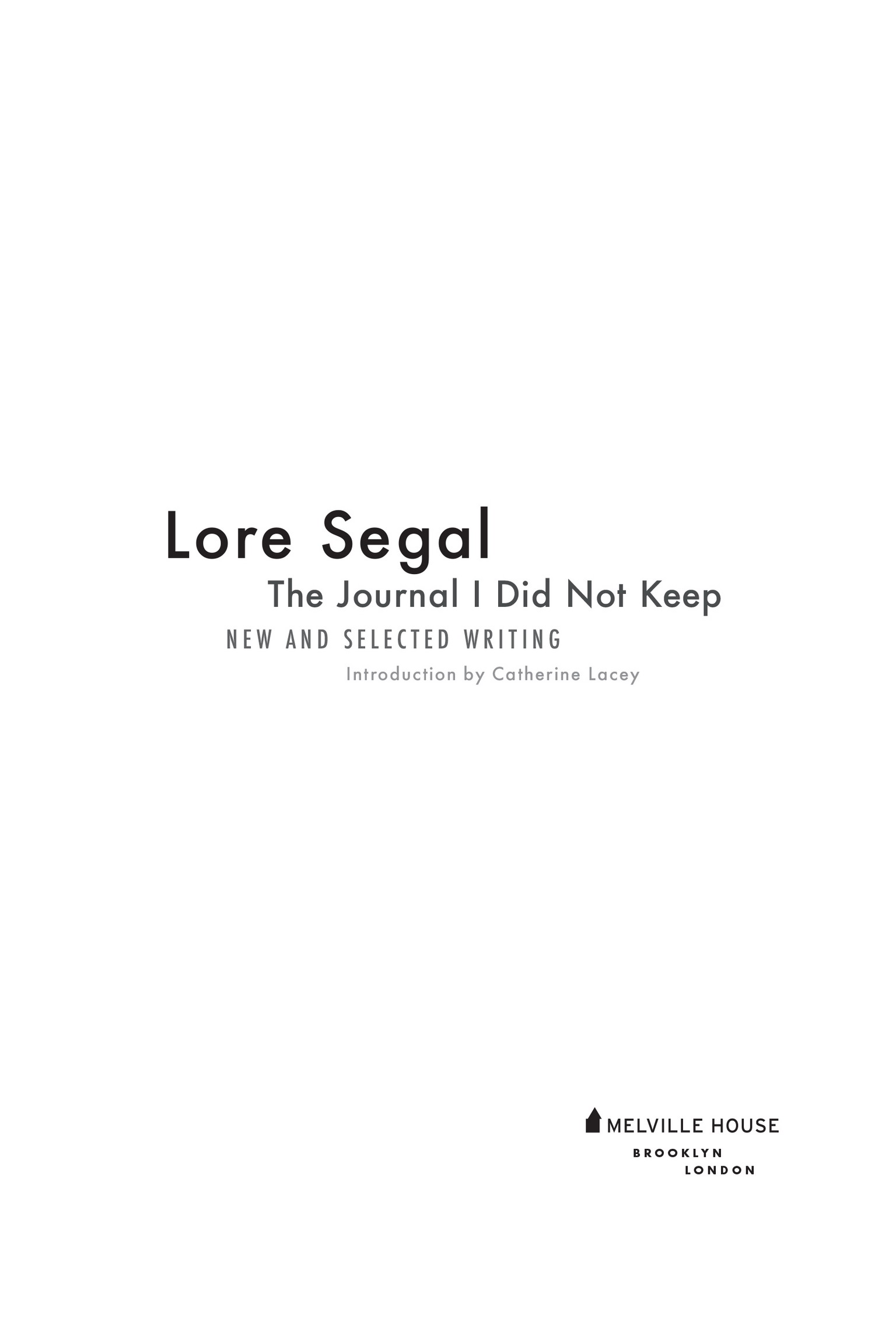
THE JOURNAL I DID NOT KEEP
Copyright Lore Segal, 2019
All rights reserved
First Melville House Printing: June 2019
Melville House Publishing
46 John Street
Brooklyn, NY 11201
and
Melville House UK
16/18 Woodford Road
London E7 0HA
mhpbooks.com
@melvillehouse
ISBN: 978-1-61219-747-0
ISBN: 978-1-61219-748-7 (eBook)
Library of Congress Cataloging-in-Publication Data
Names: Segal, Lore Groszmann, author. | Lacey, Catherine, 1985- author of introduction.
Title: The journal I did not keep : new and selected writing / Lore Segal; introduction by Catherine Lacey.
Description: Brooklyn, NY : Melville House Publishing, 2019.
Identifiers: LCCN 2019018216 (print) | LCCN 2019018274 (ebook) | ISBN 9781612197487 (reflowable) | ISBN 9781612197470 (hardcover)
Classification: LCC PS3569.E425 (ebook) | LCC PS3569.E425 A6 2019 (print) | DDC 818/.5409dc23
LC record available at https://lccn.loc.gov/2019018216
Designed by Beste M. Doan
ISBN: 978-0-8234-3857-0 (hardcover)
Ebook ISBN9781612197487
v5.4
a
Remembering my mother, Franzi
Lore Segal was walking in her Upper West Side neighborhood when she realized that a sentence shed written fifty years earlier had contained the wrong word. The sentence had described a woman as having a useless bosom. But only then, five decades later, did she realize that this bosom had not been useless so much as it had been unused.
An unused bosom! she thought to herself. Unused!
This restless, persevering intensity animates all of Segals work, and the careful reader might find its roots in the momentous circumstances that first unearthed her talents. At the age of ten in 1938, young Lore was one of the first children in the Kindertransport program, sent by train from Vienna to England in an effort to spare her from the increasing presence of the Nazi regime in Austria. Once there, she set to writing a series of letters to convince the refugee committee to bring her parents to Englanda highly unlikely reunification, but one that did indeed occur.
In Other Peoples Houses, her 1964 debut novel that has been described by some as a memoir, Segal scrutinizes the sappy metaphors she used in those letters. Young Lores infatuation with an image of a rose frozen in the snow seems to both perplex and amuse the older Loreand yet at the time she believed her metaphors worked! Her parents escaped the Holocaust on a domestic workers visa, though their daughter was prohibited from living with them, shuffled between five different English families before going off to university. Those tumultuous years instilled, as Cynthia Ozick wrote, a permanent sense of being human contraband, and established Segals inimitable styledry and exacting but buoyed by a resolute sincerity. She emerged from her adolescence in England as one of those rare minds that meets lifes essential volatility with respect instead of fear, honesty instead of sentimentality.
In 1961, a decade after she immigrated to New York City, Lore published her first of many stories in The New Yorker and married David Segal, a young editor who quickly rose to become an influential senior editor at Knopf. Her lifetime of nomadism and displacement came, at least in some ways, to an abrupt end. Shes lived on the Upper West Side of Manhattan ever since, where shes kept a strict morning writing practice. Even my children knew if they were going to break their leg, they had to do it after one p.m.! she recalled. Though she is a self-professed slow writer, Segal is endowed with an unflagging work ethic and a wide range of talents. Shes written five novels, eight childrens books, dozens of short stories, and many translations, including a volume of Grimms fairy tales and a portion of the Bible.
Its very embarrassing to say Ive translated the Bible, she admitted. I have to move very rapidly to the next sentence! Among Segals accolades are a Guggenheim Fellowship, three O. Henry Awards, and a nomination for the Pulitzer, so shes surely put this good-humored humility to work over the years. Its a temperament just as apparent in her writing as it is in her apartment: a pair of googly eyes transform a light switch into an amusement; the worn interior of a closet door charts the heights of her children, friends, grandchildren, and a lone dog. Most (but not the dog) have overshot Segals petite stature, but a nearby portrait drawn by her friend and collaborator Maurice Sendak captures her outsized wit and ferocious intelligence: shes depicted as a rejoicing, Sendakian Wild Thing.
In 1985 Segal published the novel Her First American, which follows a young Austrian refugee named Ilka, who falls in love with a powerfully charming and prominent black intellectual in 1950s America. Ilka is as wide-eyed as most twenty-two-year-olds, but she has an uncommon sort of fearlessnessthe kind that seems to have never known fear. Carter Bayoux, her older and wiser inamorato, introduces Ilka to the ways in which race, class, religion, and prejudice function in America; as Stanley Crouch notes in an introduction to one edition of the book, these were topics that the majority of white American writers had long been too afraid to touch. Segals fortitude and personal history make her the ideal mind for such a task, while her munificence and astute perceptions prevent the story from veering into the polemic. The novel, hailed by many as a classic, took her eighteen years to write and has a modernist touch, especially in the crackling bits of dialogue and an almost deadpan sense of humoryes, humor. Despite the heavy subject matter, her sentences always have a way of working toward some wry, dark truth. But the heart of Her First American is the powerfully drawn humanity of both the main characters. One is estranged from her country; the other is estranged within his country. Their love comes partly from the friction between that shared sense of half-displacement.
Segals output and diligence are all the more impressive when you learn that her husband died after only nine years of marriage, leaving her to support their two children with a still somewhat nascent writing career. She did have the help of her mother, Franzi, who lived to one hundred and also knew what it meant to be widowed young. Agingwith all its wisdom and indignitiesseems to have always been one of Segals subjects, and this may be one of the reasons her work has flourished in this later stage of her life.
Font size:
Interval:
Bookmark:
Similar books «The Journal I Did Not Keep: New and Selected Writing»
Look at similar books to The Journal I Did Not Keep: New and Selected Writing. We have selected literature similar in name and meaning in the hope of providing readers with more options to find new, interesting, not yet read works.
Discussion, reviews of the book The Journal I Did Not Keep: New and Selected Writing and just readers' own opinions. Leave your comments, write what you think about the work, its meaning or the main characters. Specify what exactly you liked and what you didn't like, and why you think so.

